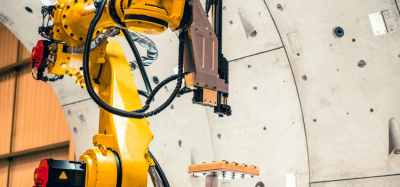Real-time clearance analysis via mobile laser scanning
Posted: 5 April 2010 | | No comments yet
The Metropolitan Transportation Authority (MTA) is responsible for the entire public transportation network of New York City. The largest in North America, MTA’s rail infrastructure is impressive, with 8.5 million passengers per day, operation of 8,934 railway cars and 734 stations, 3,310 kilometres of track and the budget in 2008 was 10.8 billion USD.
The Metropolitan Transportation Authority (MTA) is responsible for the entire public transportation network of New York City. The largest in North America, MTA’s rail infrastructure is impressive, with 8.5 million passengers per day, operation of 8,934 railway cars and 734 stations, 3,310 kilometres of track and the budget in 2008 was 10.8 billion USD.
The Metropolitan Transportation Authority (MTA) is responsible for the entire public transportation network of New York City. The largest in North America, MTA’s rail infrastructure is impressive, with 8.5 million passengers per day, operation of 8,934 railway cars and 734 stations, 3,310 kilometres of track and the budget in 2008 was 10.8 billion USD.
Known as the ‘city that never sleeps’, this presents many challenges to MTA. The New York subway system operates 24 hours a day, 365 days a year. Track inspections, maintenance operations and engineering designs must be planned and executed in a way to minimise interruptions to subway schedules.
In November 2007, MTA commissioned the team of Plasser American, Zoller+Fröhlich and Amberg Technologies for the delivery of a Plasser Track Geometry Car (TGC) outfitted with a high-speed laser scanner and specialised software. The system would be the first of its kind with very specific and challenging design criteria established by MTA. To meet the mapping speed of the TGC and the mapping resolution specifications, a special dual-head laser scanner was developed by Zoller+Fröhlich.
In addition to track geometry data, the measurement system would provide dynamic clearance analysis and high resolution, 3D mapping of all objects in the vicinity of the track. Management of the data from the TGC and the laser scanner required a special development.
Amberg Technologies was responsible for the design of a custom software, which integrated data from a variety of sensors aboard the TGC including odometer (DMI), cant sensors, gauge sensors, track curvature sensors, IMU and GPS. The custom software, based on the comprehensive Amberg Rail 2.0 platform, provided two modes of operations:
Clearance (On-board) Mode
Used for everyday operation aboard the TGC, this mode provides real-time, continuous clearance analysis relative to the track and based on stationing, recording and storage of minimum profiles at 0.3m intervals and continuous recording of all raw data for later use in Project Mode.
Project (Off-board) Mode
This provides the ability to perform all data processing and analysis in the office, including high resolution clearance evaluation from any measurement run in 2.5D and 3D. MTA specific clearance envelopes were also integrated into the software which provides an efficient analysis workflow. A diverse selection of export and reporting options allow 2D, 2.5D and 3D views in ASCII, DXF, text and graphical reports. The challenging project was successfully implemented in May 2009 after rigorous accuracy and acceptance tests were fulfilled. Today, the system provides one of the world’s largest and busiest subway networks with a comprehensive mapping system that is used on a daily basis for a variety of applications.







